As rollups become the core of Ethereum's scalability, interoperability between L2s is crucial for the success of its rollup-centric roadmap. Fragmentation between L2s leads to inefficiencies and slows down adoption.
A few months ago, we published a study exploring "The Current State of Rollup Interoperability in 2024." Here are our findings.
1. Current Issue: L2 Fragmentation
L2 rollups, such as Arbitrum, zkSync, and Optimism, operate independently of each other, with high costs and slow speeds for cross-chain communication. Without seamless cross-rollup transactions, the Ethereum ecosystem will remain fragmented, affecting liquidity and composability.
2. Optimistic Rollups: Standard Bridging Issues
Rollup bridging proves its state to Ethereum L1 to inherit its security. However, OP Rollups introduce delays due to the "challenge window" (typically 7 days).
This delay becomes a bottleneck for cross-chain transactions—no one wants to wait a week to complete a DEX trade!
3. ZK Alternatives
ZK rollups provide faster finality through zero-knowledge proofs, but their bridging finality still takes hours (e.g., @zksync Era: 21 hours, @Starknet: 9 hours). The delay mainly stems from execution buffers and expensive proof verification on L1. Although the verification speed of ZK proofs is faster than OP Rollups, the computational load remains significant.
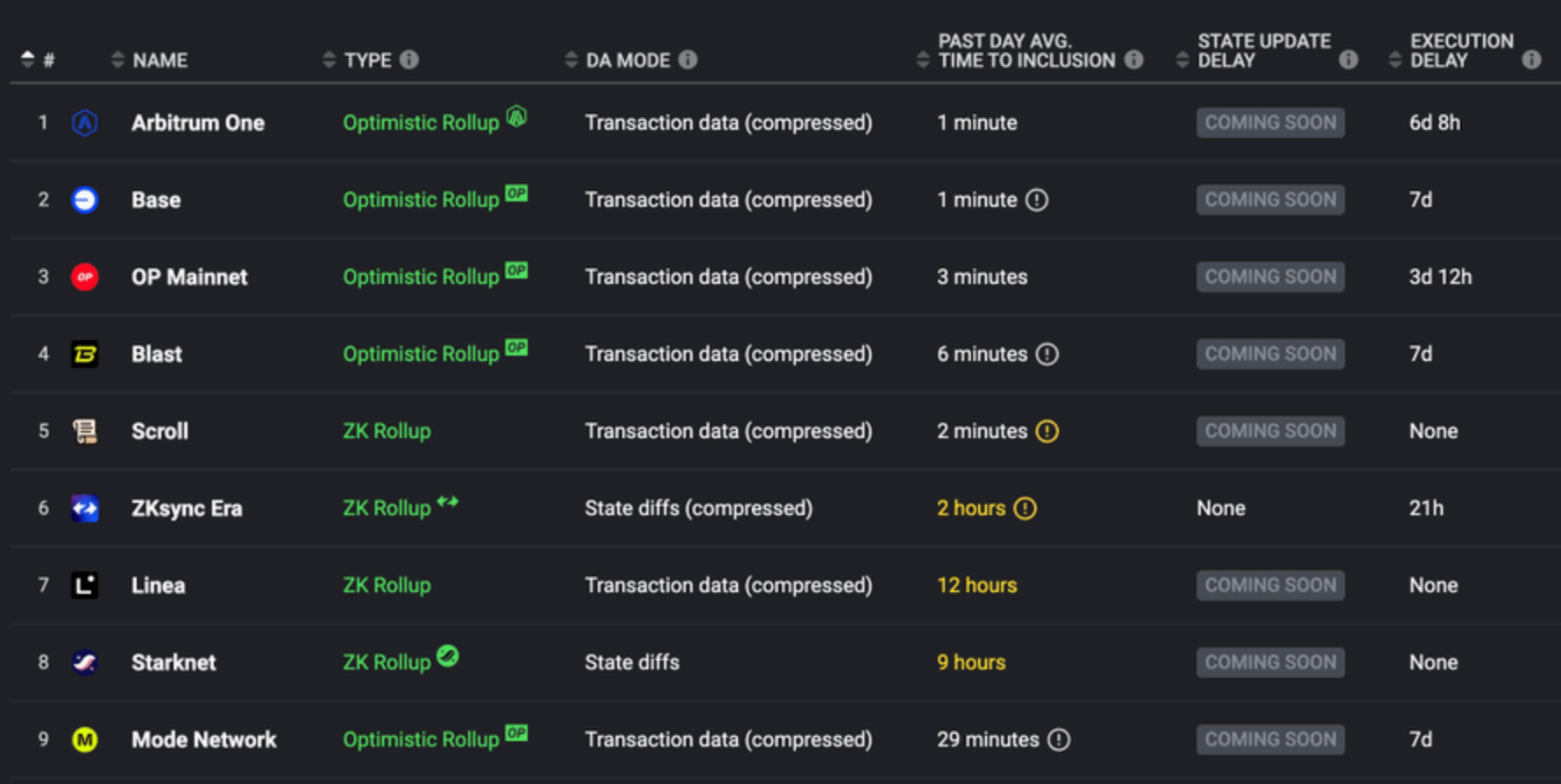
Source: @l2beat
4. Keystore Rollups: Simplifying Account Management
Last year, @VitalikButerin proposed keystore rollups, which focus on storing account keys rather than a complete virtual machine (VM). By using Merkle proofs of keys stored on L1 to verify transactions, this simplifies user wallet interactions across different rollups. Users can verify and manage accounts across L2s from a main wallet, enhancing the user experience.
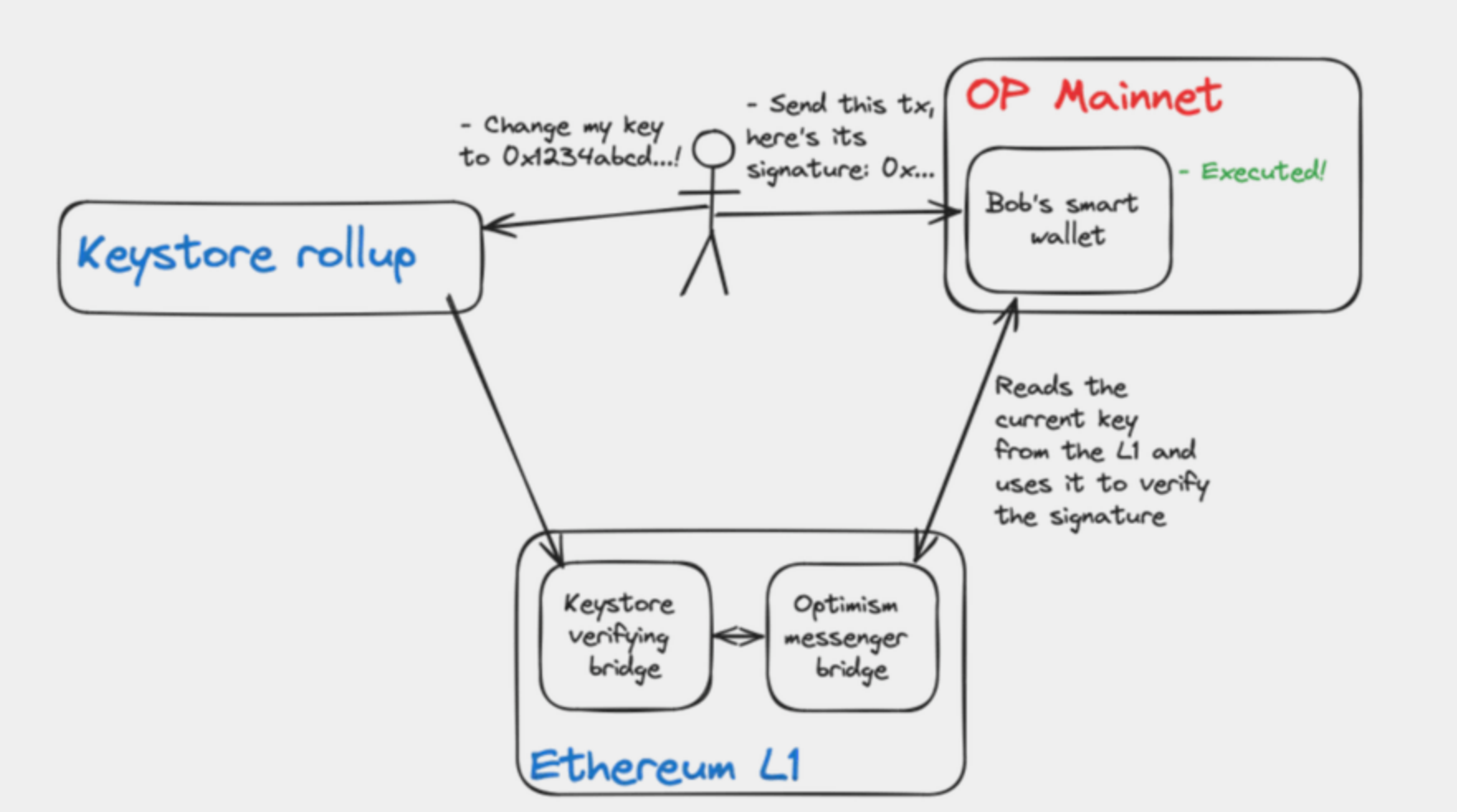
However, in addition to Vitalik's original design, there are three leading keystore rollup models:
1) @Scroll_ZKP's approach: Stores keystore data on L1, with zkEVM rollups using L1SLOAD precompiled to synchronize account configurations, achieving low-cost L1 reads.
2) @base's design: Only stores the state root on L1, using calldata to sort transactions. Merkle proofs are used to synchronize account data between L2s.
3) @0xStackr's design: Very similar to Base but adopts a "micro rollup" framework using a minimal virtual machine.
Despite these advancements, the gas costs of proof verification remain a key challenge.
5. Aligned Layer: Efficient ZK Proof Verification
@alignedlayer offers a solution to the expensive proof verification problem of ZK rollups. As an AVS of @EigenLayer, it enables Ethereum validators to verify ZK proofs at a very low cost by leveraging guarantee validators.
Aligned reduces verification costs to just 3000 gas per proof—almost zero on Ethereum L1—making it a scalable solution for smaller rollups.
However, this also introduces trust assumptions—if the total locked value (TVL) of a rollup exceeds the collateralized margin, attacks may become profitable.
6. Proof Aggregation Layer: Enhancing Proof Efficiency
Proof aggregation is another innovation that allows multiple ZK proofs to be combined into a single proof, alleviating the burden of on-chain verification.
There are mainly two types of proof aggregation protocols:
• General Aggregation: Supports multiple proof types (Groth16, Halo2, Plonky2) and reduces gas costs for applications.
• Aggregated Rollup Bridging: Built into the ZK stack, such as @0xPolygon's AggLayer and @zksync's Hyperbridge, designed to minimize verification costs and enhance cross-rollup composability.
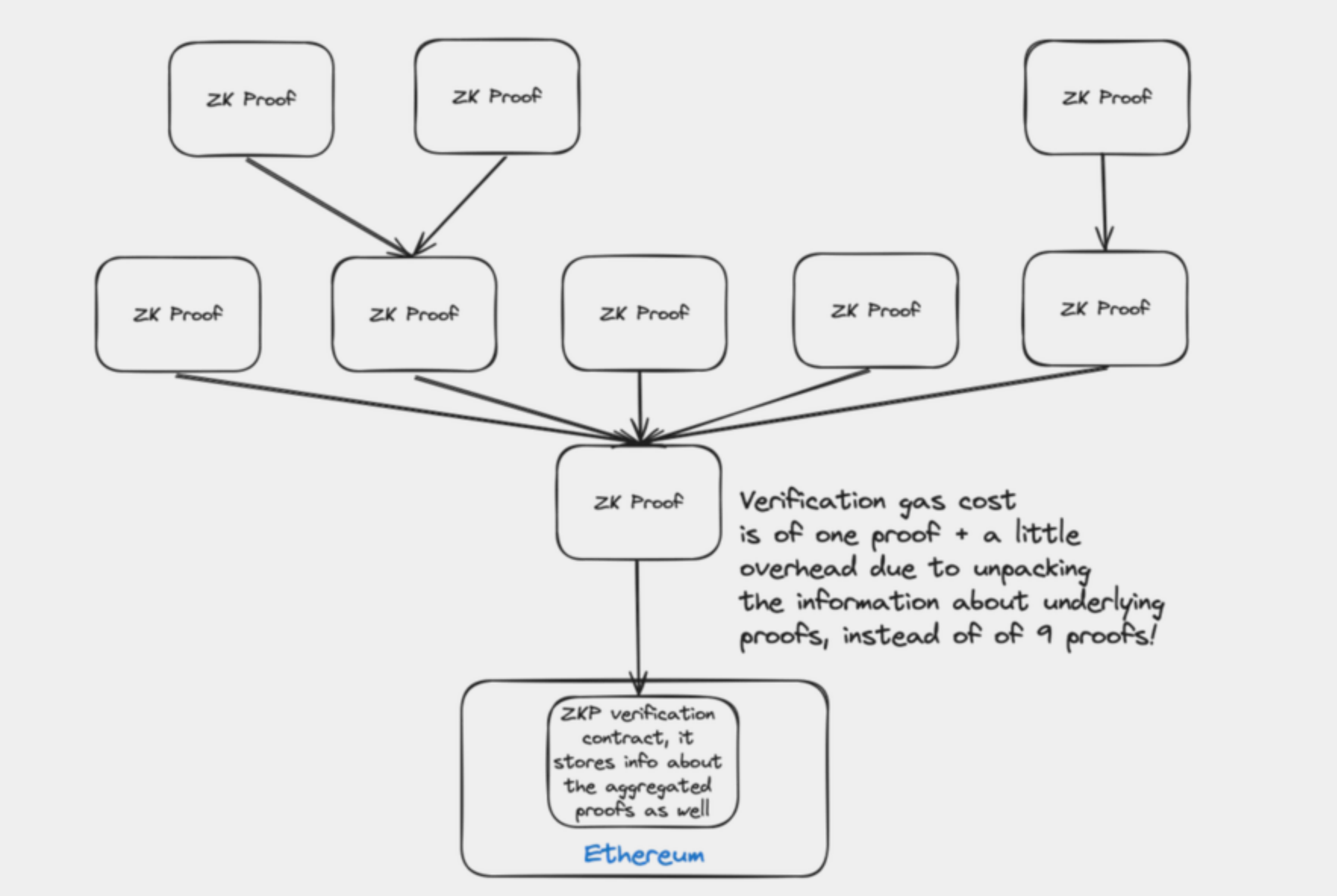
7. Efficient Intent-Based Bridging and Keystore+ Rollups
Most cross-chain bridges, such as @StargateFinance (using @LayerZero_Core), are message-based. They lock tokens on the source chain, send messages to the target chain, and then unlock an equivalent amount of tokens. However, this approach heavily relies on the messaging protocol at the trust level.
Intent-based bridging eliminates the need for messaging.
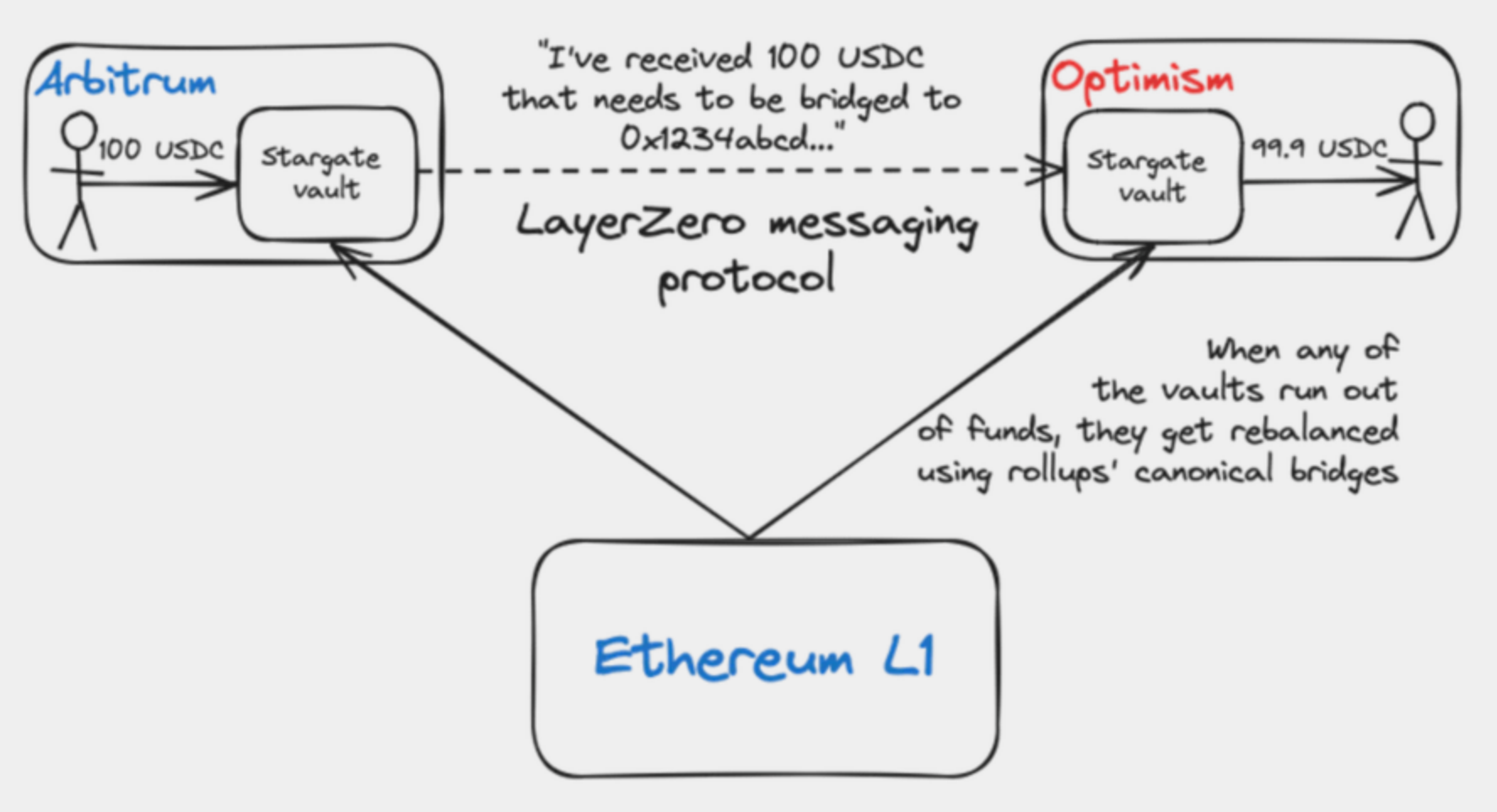
How does it work?
Funds are locked as "cross-chain orders," and anyone can fulfill the order by sending tokens on the target chain. The fulfilling party can claim the locked funds on the source chain after the transaction is confirmed on the target chain.
Example: Protocols like @AcrossProtocol utilize optimistic oracles, such as @UMAprotocol, to obtain the final state of Layer 2 before achieving finality.
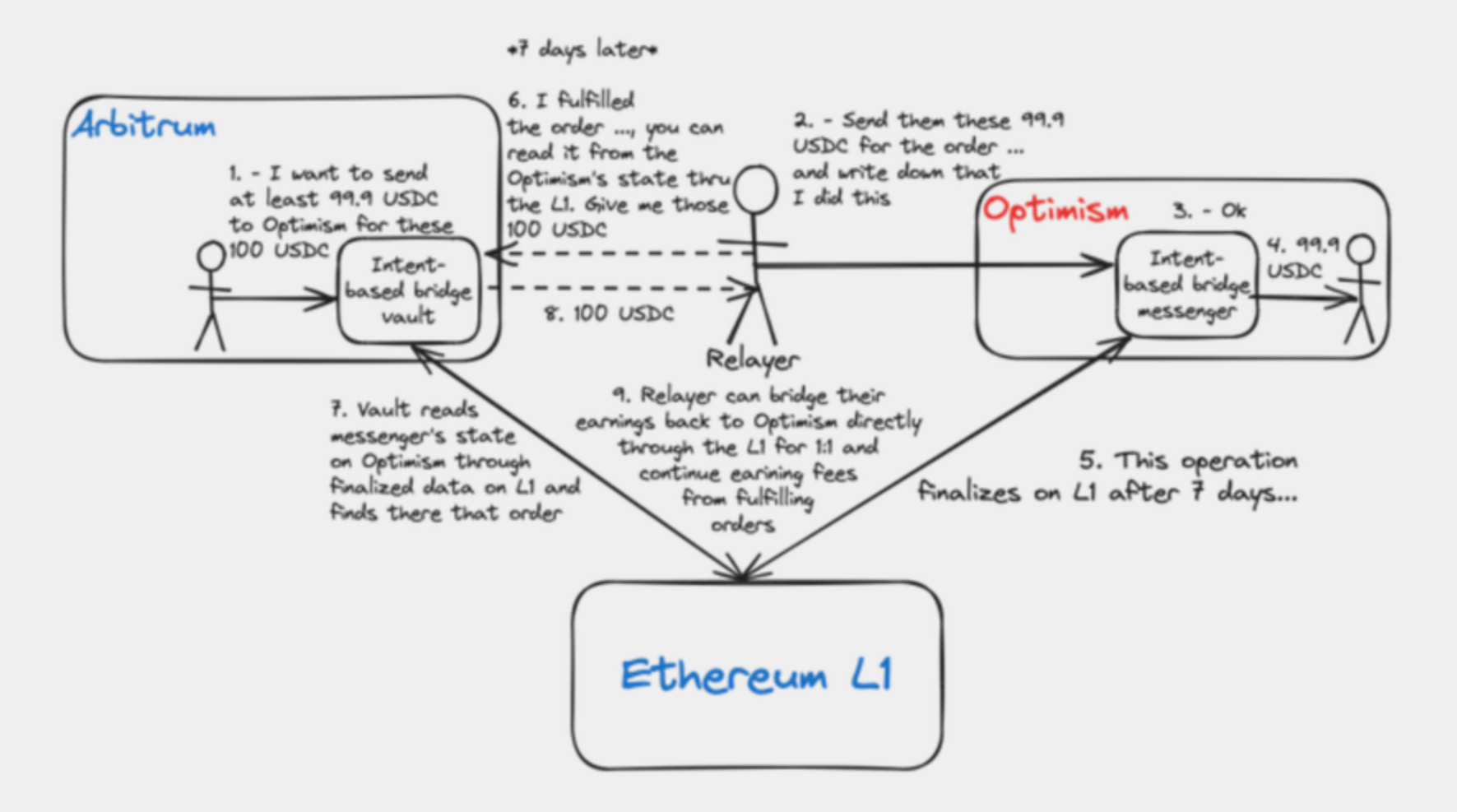
Unified All Chains ENS
Imagine having a single Ethereum Name Service (ENS) address that can be used across all rollups. Keystore rollups make this possible by deploying mini-accounts on bytecode-equivalent chains.
By using CREATE2 and multi-chain factories, users can maintain the same address across all rollups, simplifying account management and overall user experience.

Sorting Mechanism in Keystore+ Rollups
Sorting is another key aspect of rollup interoperability. In keystore rollups, centralized sorters can be replaced by decentralized sorting mechanisms, eliminating single points of failure and enhancing censorship resistance.
Decentralized sorting mechanisms allow transactions to be processed within approximately a 12-second window, ensuring fast cross-rollup transactions without sacrificing decentralization.
8. Why We Don't Rely on Shared Sorting
Shared sorting is often discussed as a solution for OP rollup interoperability, but our research highlights its limitations. Shared sorting centralizes control by allowing a single sorter to manage multiple rollups, which could lead to oligopolistic control over the rollup ecosystem.
In contrast, ZK rollups that adopt shared proof aggregation bridges maintain decentralization while achieving rapid finality between multiple rollups—making it a more sustainable and secure interoperability solution.
This research article primarily focuses on ZK rollups and ZK technology because OP rollups fundamentally lack rapid objective finality. Only through ZK proofs can objective finality be achieved, making ZK rollups the ideal choice for long-term interoperability solutions.
Despite the limitations of optimistic rollups in this regard, there have been significant developments within their ecosystem. For example, Optimism is exploring effectiveness-centered designs and partnered with @RiscZero a few months ago to explore new integrations.

9. ZK Rollups vs. OP Rollups
Due to the use of zero-knowledge proofs, ZK Rollups can confirm transactions faster than OP Rollups. They do not require a challenge period (which can last up to 7 days for OP Rollups), giving them an advantage in cross-rollup interoperability.
• ZK Rollup Advantages: Independent aggregation proofs enable ZK Rollups to achieve composability across different Rollups without worrying about centralization issues.
• Current Status of Optimistic Rollups: Despite some technical limitations, Optimistic Rollups like @Optimism, @arbitrum, and @base dominate due to their strong ecosystems, excellent developer tools, and user-friendly infrastructure.
Interoperability remains the most pressing challenge in the Ethereum Rollup roadmap. For a deeper understanding of our complete analysis and comprehensive findings, please read the full paper here 🔗 https://research.2077.xyz/the-state-of-rollup-interoperability. This article was written by @alexhooketh.
Article link: https://www.hellobtc.com/kp/du/10/5467.html
Source: https://x.com/2077Research/status/1844788415809892514
免责声明:本文章仅代表作者个人观点,不代表本平台的立场和观点。本文章仅供信息分享,不构成对任何人的任何投资建议。用户与作者之间的任何争议,与本平台无关。如网页中刊载的文章或图片涉及侵权,请提供相关的权利证明和身份证明发送邮件到support@aicoin.com,本平台相关工作人员将会进行核查。




